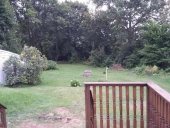












My project thread
Agriculture collects solar energy two-dimensionally; but silviculture collects it three dimensionally.




Cj Verde wrote:Consider getting advice from someone who's taken a PDC. Try locating someone here.




Xisca - pics! Dry subtropical Mediterranean - My project
However loud I tell it, this is never a truth, only my experience...




Xisca - pics! Dry subtropical Mediterranean - My project
However loud I tell it, this is never a truth, only my experience...




My project thread
Agriculture collects solar energy two-dimensionally; but silviculture collects it three dimensionally.








Xisca - pics! Dry subtropical Mediterranean - My project
However loud I tell it, this is never a truth, only my experience...





My project thread
Agriculture collects solar energy two-dimensionally; but silviculture collects it three dimensionally.




















My project thread
Agriculture collects solar energy two-dimensionally; but silviculture collects it three dimensionally.





|
Hey, sticks and stones baby. And maybe a wee mention of my stuff:
Support permies and give beautiful gifts to gardeners: permaculture playing cards.
https://gardener-gift.com/
|







